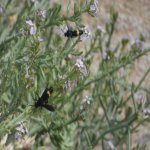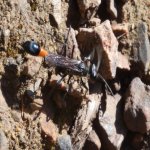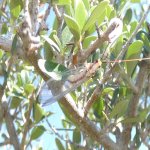thomasclark1985
Well-known member
Hi,
Can someone help me ID this wasp please? it was seen in Corsica, the closest I can get to an ID using my "a photographic guide to insects of southern Europe & the Mediterranean" is Scolia hortorum, although it's range doesn't cover Corsica, can somebody help to confirm or correct.
Many thanks,
Tom
Can someone help me ID this wasp please? it was seen in Corsica, the closest I can get to an ID using my "a photographic guide to insects of southern Europe & the Mediterranean" is Scolia hortorum, although it's range doesn't cover Corsica, can somebody help to confirm or correct.
Many thanks,
Tom








